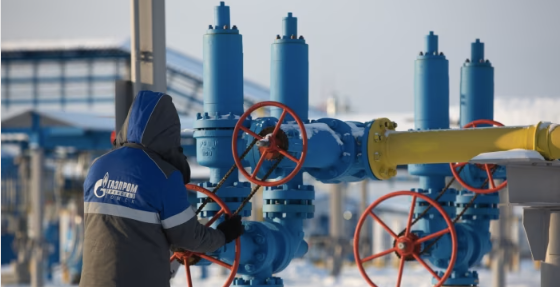Oil prices surged to their highest in over four months, fuelled by a new wave of U.S. sanctions targeting Russia’s energy sector. The measures have thrown Asian importers into a tailspin, with refiners in India and China scrambling to secure alternative supplies. Brent crude climbed above $81 per barrel after a nearly 4% jump, while West Texas Intermediate hovered close to $78.
The United States launched its most aggressive sanctions yet, hitting major Russian exporters, insurers, and over 150 oil tankers. These sweeping actions, coming less than two weeks before President-elect Donald Trump takes office, have underscored the volatility gripping global oil markets. India, a key buyer of Russian crude post-Ukraine invasion, and China, the world’s largest oil importer, are now bracing for months of supply disruptions.
In China’s Shandong province, independent refiners held emergency meetings as traders reported expectations of import interruptions lasting up to six months. Indian authorities echoed concerns, highlighting the potential for significant upheaval in supply chains.
Oil prices have already been climbing, driven by colder weather, shrinking U.S. inventories, and speculation that Trump’s administration may tighten restrictions on Iranian oil flows in the months ahead. The outgoing Biden administration’s comprehensive sanctions on Russian energy threaten to further upend the market, complicating OPEC+ plans to ease production curbs later this year.
Rising prices could also exacerbate inflation pressures, posing fresh challenges for central banks like the Federal Reserve, which may now find rate cuts less appealing.
While the true impact of the sanctions on crude flows remains unclear, early disruptions are evident. Due to sanctions, three tankers carrying over 2 million barrels of Russian oil have been left floating off China’s eastern coast. Citigroup and Goldman Sachs Analysts estimate up to 30% of Russia’s so-called shadow tanker fleet could be affected, threatening as much as 800,000 barrels per day. However, actual losses may be less severe.
Vishnu Varathan, head of economics and strategy at Mizuho Bank, argued that the oil market may adapt, as Russian crude often finds its way into global reserves despite sanctions.
OPEC+, including Russia, is poised to cautiously restore production starting in April, having already delayed increases multiple times.
Meanwhile, the paper oil market is flashing signs of increased volatility. Oil options are leaning bullish, with rising implied volatility and traders favouring call options. Russian crude exports have already slipped to their lowest levels since August 2023, as Asian refiners boost purchases from the Middle East and Atlantic Basin amid fears of tightening supplies from Russia and Iran.
As the dust settles on these sanctions, questions remain about their long-term impact. Will U.S. measures choke off Russian supply enough to sustain high prices? Or will global buyers find ways to navigate around yet another geopolitical roadblock? For now, traders are bracing for turbulence.
